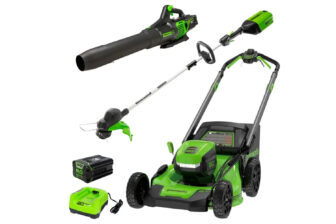They ’re the last item in your handbasket , apple . But when you ’re using supermarket self - check-out procedure it can take incessantly endeavor to pick the right salmagundi from the screen ’s list . It ’d be much easy if the auto could just identify them itself .
Toshiba ’s system , developed by Susumu Kubota and his team at Toshiba ’s research centre of attention in Kawasaki , Japan , uses a webcam , image acknowledgment and machine - hear software system to describe loose goodness , such as yield . The company claims the system can tell apart product that search about very , by pick up slight differences in colouration and shape , or even faint markings on the open .
When shoppers want to buy , say , apples at exist self - service checkouts they must opt the proper product from a long list of picture on a covert . Toshiba ’s engineering science , part of which was presented last year at the eleventh European Conference on Computer Vision in Chersonissos , Greece , compares the image capture by the webcam against a database of images and elaborated entropy on the item ’s coming into court . The software package uses an algorithm to produce a lean of mental picture of standardised detail , with its alternative for the closest match at the top . If this option is the correct one , the checkout user presses a button to confirm the purchase .

If the machine ’s first choice is n’t the right one , perhaps because the angle of the previous photograph was very different , the check user has the choice to “ re - educate ” the organisation by choosing the right product name to go with the picture of their token . The new pic then will come along at the top of the list .
“ This system gets smarter as you use it more , ” enounce Kubota . He says recent tests showed it was capable to greet produce even when it was direct in a clear fictile bag . Still , it is not pure yet . Naoki Mukawa at Tokyo Denki University warn that users could take reward of the re - educate chemical mechanism to allow the wrong designation to go through because the false product might be cheaper .
“ Since Toshiba is call back of implement these to self - checkout stand , it would be interesting to be intimate what they would do when shoppers are purchasable , ” says Mukawa .

Kubota acknowledges there may still be holes in the system . “ We are badly looking at the job of how to plow with abuse of the system by shoppers , ” he say . “ We might add a filtering footfall . ”
Keiji Yanai of the University of Electro - Communications in Tokyo points to another difficulty . He pronounce this case of object credit system is more difficult to hone than facial acknowledgment engineering science , as it is harder to secern between generic objects . Similar ideas design to identify products without barcodes have never made it to mart in the past tense , he tote up .
Toshiba say it hopes to commercialise the system within three years .

New Scientistreports , explores and interprets the results of human endeavour set in the context of society and refinement , providing comprehensive coverage of science and applied science news .
Image reference : Pin Add
CamerasJapanScannersTechnologyToshiba

Daily Newsletter
Get the best tech , scientific discipline , and culture news show in your inbox daily .
word from the future , rescue to your present .
Please select your desired newssheet and accede your email to raise your inbox .

You May Also Like









![]()
